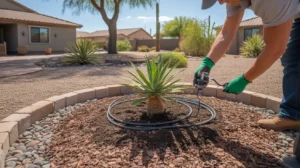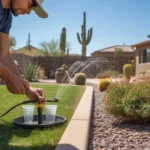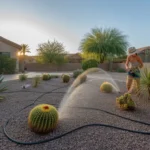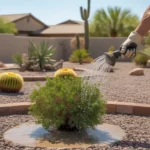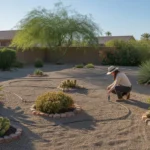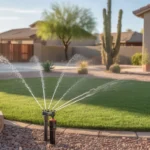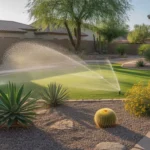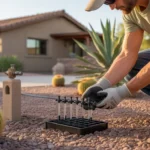Dry soil is a common struggle for Chandler homeowners, especially during the scorching summer months. Watching your once-lush landscape wilt and fade can be disheartening, but there are effective strategies to help your yard cope with moisture-starved soil. By understanding the factors that contribute to dry soil and implementing smart watering and soil care practices, you can keep your Chandler yard looking its best even in challenging conditions.
Identify the Causes of Dry Soil
The first step in tackling dry soil is to understand why it’s happening. In Chandler, several factors can contribute to parched earth in your yard:
- Intense heat and low humidity during summer
- Infrequent rainfall and drought conditions
- Sandy or rocky soil with poor water retention
- Slopes or uneven terrain that cause runoff
- Competition from mature trees and shrubs
By identifying which issues are at play in your landscape, you can develop a targeted plan to improve soil moisture. A yard with compacted clay, for example, will need different interventions than one with fast-draining sand.
If you’re unsure about your soil type or moisture issues, consider having your yard assessed by a local landscaping professional. They can perform tests to evaluate soil composition, drainage, and water retention, then recommend customized solutions for your Chandler property.
Upgrade Your Irrigation System
Inefficient or poorly maintained irrigation is a common culprit behind dry soil woes. Traditional sprinkler systems often waste water through evaporation, wind drift, and poor coverage. Upgrading to a modern drip irrigation system can make a dramatic difference in soil moisture.
Drip irrigation delivers water slowly and directly to plant root zones, minimizing loss and allowing soil to absorb moisture deeply. Properly installed and maintained, drip systems can reduce water usage by 30-50% compared to sprinklers while keeping soil evenly moist.
When planning an irrigation upgrade, work with a Chandler landscaping contractor who understands local conditions and can design a system tailored to your yard’s layout, plant types, and water needs. Features like smart controllers, moisture sensors, and multiple zones can further optimize water delivery for healthier soil.
Improve Soil Quality and Retention
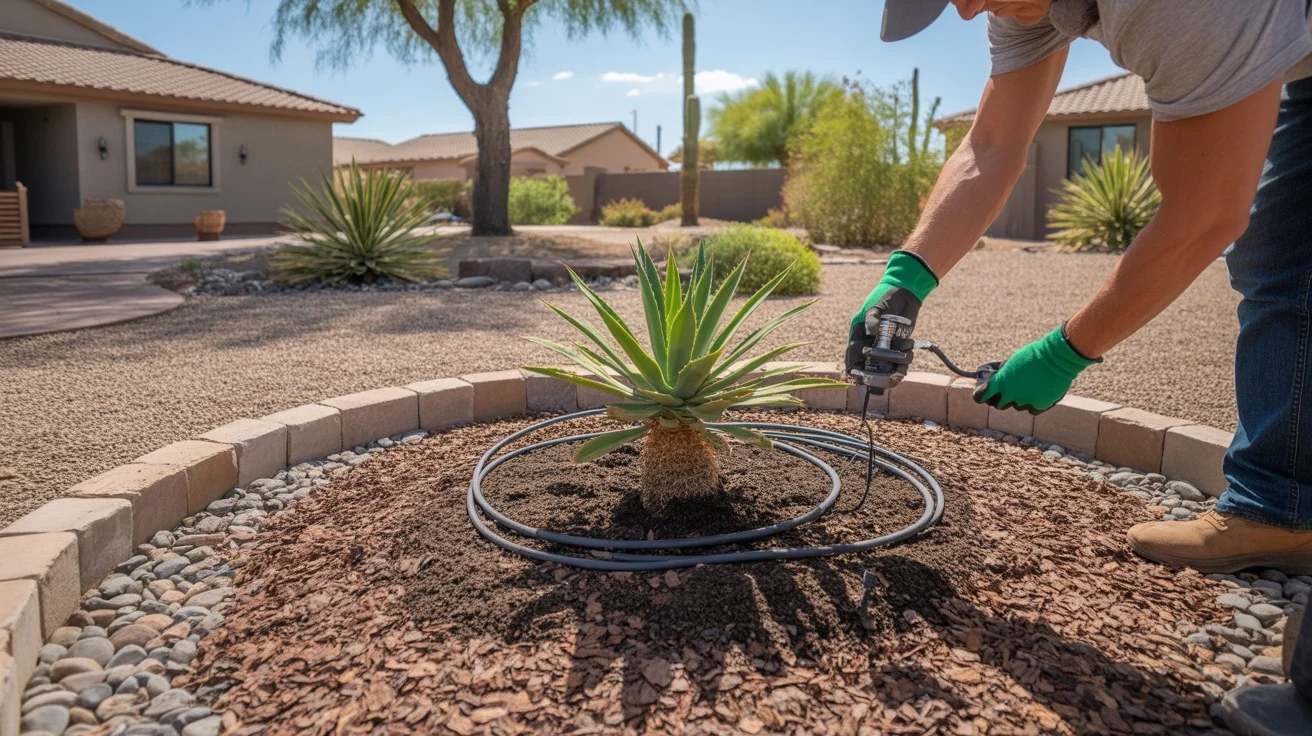
Healthy soil is the foundation of a thriving, drought-resilient yard. If your Chandler landscape has sandy, rocky, or compacted soil, improving its structure and water-holding capacity is crucial.
One of the most effective ways to combat dry soil is by adding organic matter, such as compost, aged manure, or finely shredded bark. These materials help sandy soil retain moisture while loosening heavy clay and improving drainage. Aim to work in several inches of organic matter to a depth of 8-12 inches for best results.
In addition to organic amendments, consider incorporating water-retaining materials like perlite, vermiculite, or hydrogel polymers. These substances act as tiny sponges, absorbing water and releasing it slowly back into the soil. They’re especially helpful for moisture-loving plants or problem dry spots.
Mulch Deeply and Consistently
Mulch is a dry soil gardener’s best friend. A thick layer of organic mulch, such as wood chips, shredded leaves, or straw, helps soil retain moisture by shielding it from evaporation and moderating temperature fluctuations.
For maximum benefit, maintain a mulch layer of at least 3-4 inches deep around plants, trees, and exposed soil surfaces. Avoid piling mulch directly against plant stems or tree trunks, which can trap moisture and encourage rot.
In addition to conserving soil moisture, mulch suppresses water-stealing weeds and gradually breaks down to enrich the soil. Organic mulches are an inexpensive, low-effort way to keep Chandler yards moist and healthy even during dry spells.
Choose Drought-Tolerant Plants
If you’re tired of babying thirsty plants through Chandler’s dry months, consider transitioning to a more drought-tolerant landscape. Many beautiful, low-water plants thrive in local conditions with minimal irrigation once established.
Some excellent options for dry Chandler yards include:
- Desert-adapted trees like palo verde, mesquite, and acacia
- Succulents such as agave, yucca, and desert spoon
- Dry-loving shrubs like Texas sage, brittlebush, and creosote
- Tough groundcovers such as trailing rosemary and damianita
By filling your yard with plants that are naturally equipped to handle dry soil, you’ll spend less time and resources fighting an uphill battle against thirsty turf and moisture-hogging exotics. A water-wise landscape can be every bit as lush and inviting as a traditional yard.
Adjust Your Watering Schedule
How you water is just as important as what you water with. Deep, infrequent irrigation encourages plants to grow extensive root systems that can better access soil moisture reserves.
For most Chandler yards, watering deeply 1-3 times per week during the hot months is preferable to shallow daily sprinkling. Aim to moisten the soil to a depth of at least 6-8 inches per watering session, then let it dry slightly before watering again.
The best time to water is early morning when temperatures are cooler and winds are calmer. Midday watering can lose up to 30% of water to evaporation, while evening irrigation can leave soil soggy overnight, increasing the risk of plant diseases.
If you’re not sure if you’re watering deeply enough, try the screwdriver test: after watering, push a long screwdriver into the soil. It should slide in easily to the recommended depth. If you hit dry soil partway down, you need to water longer next time.
With some trial and error, you’ll find the sweet spot that keeps your soil moisture levels steady without wasting water. Combining a well-timed watering schedule with the other dry soil strategies covered here can make a remarkable difference in your Chandler yard’s health and resilience.
Dry soil can be a daunting challenge for Chandler homeowners, but it doesn’t have to mean the end of a beautiful, thriving yard. By understanding the causes of dry soil and implementing proven moisture-boosting strategies like smart irrigation, soil amendments, mulching, and drought-tolerant plantings, you can help your landscape withstand even the toughest dry spells. With a little knowledge and effort, you can turn dry soil despair into a lush, water-wise oasis you’ll enjoy for years to come.

